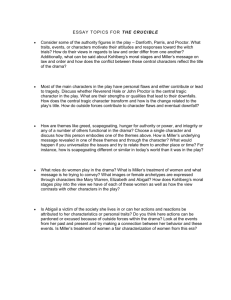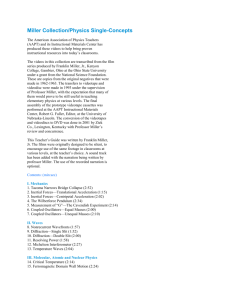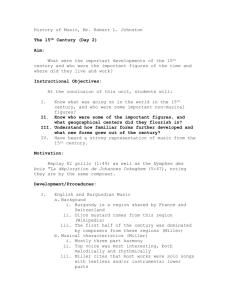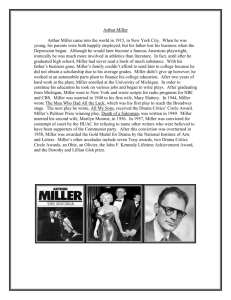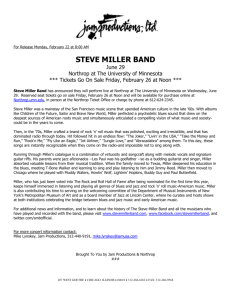Death of a Salesman by Arthur Miller Notes
advertisement
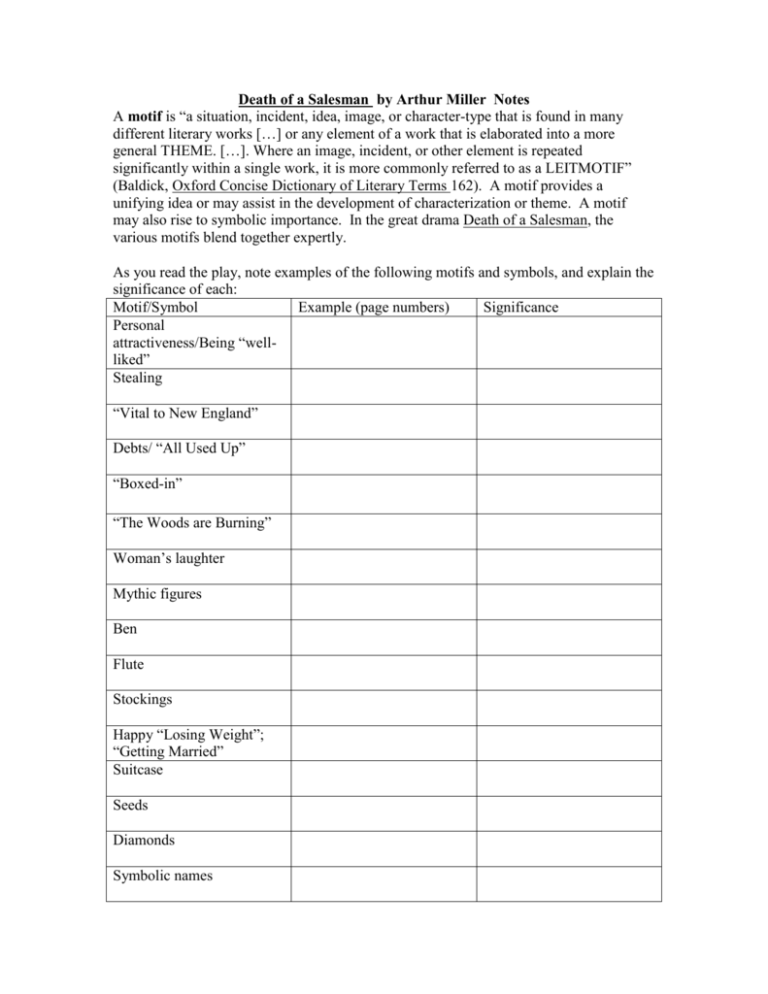
Death of a Salesman by Arthur Miller Notes A motif is “a situation, incident, idea, image, or character-type that is found in many different literary works […] or any element of a work that is elaborated into a more general THEME. […]. Where an image, incident, or other element is repeated significantly within a single work, it is more commonly referred to as a LEITMOTIF” (Baldick, Oxford Concise Dictionary of Literary Terms 162). A motif provides a unifying idea or may assist in the development of characterization or theme. A motif may also rise to symbolic importance. In the great drama Death of a Salesman, the various motifs blend together expertly. As you read the play, note examples of the following motifs and symbols, and explain the significance of each: Motif/Symbol Example (page numbers) Significance Personal attractiveness/Being “wellliked” Stealing “Vital to New England” Debts/ “All Used Up” “Boxed-in” “The Woods are Burning” Woman’s laughter Mythic figures Ben Flute Stockings Happy “Losing Weight”; “Getting Married” Suitcase Seeds Diamonds Symbolic names Arthur Miller Born in NYC in 1915; died 2005 Son of a middle-class clothing manufacturer who suffered considerable business losses in 1928. Miller wasn’t much of a student; he played football, and watched the worsening effects of the Depression on his family and neighborhood. The once rural area became crowded and industrialized, and the trees and vacant lots vanished. Before college, Miller worked (clerk, etc), and discovered literature. Attended the University of Michigan as a Journalism major, but pursued his interest in playwriting; won two prestigious drama prizes After 1938 graduation, he returned to NYC + wrote. 1949- Death of a Salesman, his first great hit and most successful play, opened on Broadway; its initial run was 742 performances, and it has recently been revived. It has won every major drama award. Miller has always been known for his social responsibility and commentary. In this play, his views are anti-establishment and anti-capitalist. He expresses a moral view, one which encompasses guilt and the continual movement of his characters toward a deeper awareness of themselves and the significance of their past and present actions. This integration of social and psychological themes distinguished Miller’s plays. Miller believed that an ordinary man could be a tragic hero; Willy Loman is not a king or nobleman, but is capable of heroism. Miller depicts tragedy as the result of the individual’s quest for personal dignity. The flaw in such an individual is his unwillingness to submit passively to established order As a modern playwright, Miller uses conventions such as innovative staging, music, and lighting to express meaning. The time of the play fluctuates between 1942 and 1928, in keeping with Miller’s view that everything exists at the same time-at least within the human mind. Miller provides for a seamless flow between times through skillfully used conventions. For example, in the 1942 (present), the characters observe doors and “walls”, but in the past of 1928, characters walk through walls that aren’t really there. In addition, music is a signal: there is the happy music of the nostalgic past, raucous music of Willy’s affair, and flute music associated with Willy’s youth. Themes: American Dream- The Quest for Self Identity- Betrayal/Disillusionment- Abandonment-
